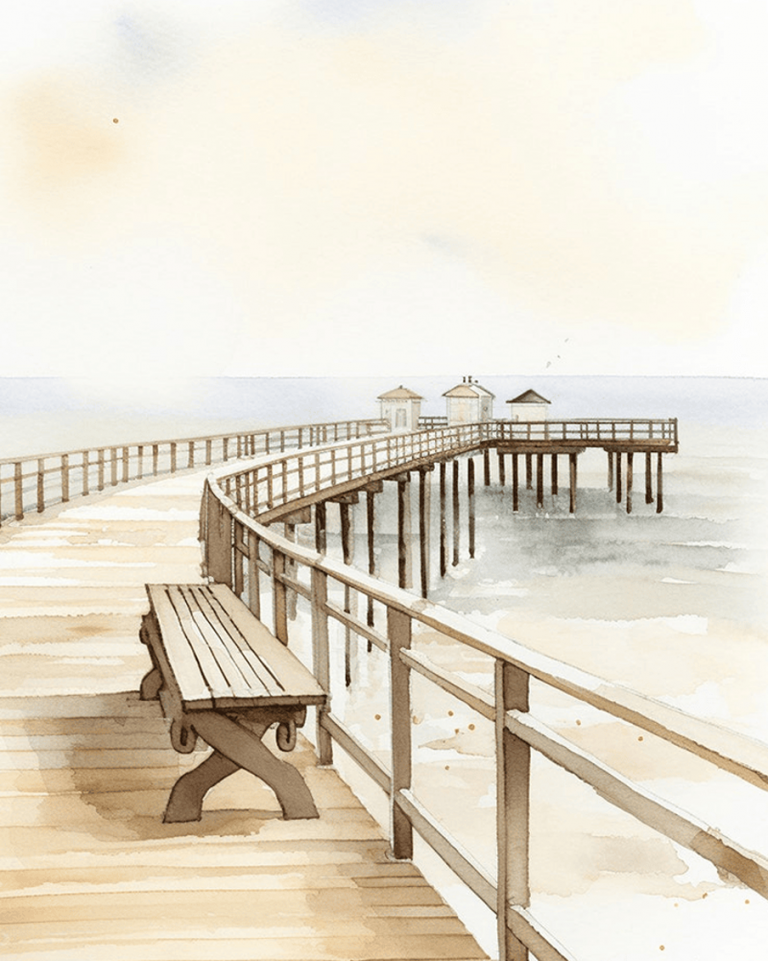
Despite the dream of owning a cottage by the sea, many villages and towns across England, are finding their homes literally being swept away by hide tides. The village of Hemsby (Norfolk) has recently been in the news, as over 8ft of beach has been swept away in recent months, and people have literally lost their homes.
And the government literally does nothing, providing no compensation. Yet the solution (a rock berm) could prevent this happening again.
Apparently coastal geologists have a joke answer to the question ‘how far is a house from sea’, with the answer ‘about 5 years’. Less funny is people losing their (impossible to insure) houses, and sometimes coastal erosion has caused serious floods, leading to loss of life.
Climate change does play a part, but in this case, it’s more to do with the fact that we are simply an island nation. The British Geological Survey now writes that there are around 30,000 houses across the nation within 25 metres of sliding into the sea.
In 1953, a serious storm on England’s east coast (which killed hundreds of people and more on the Continent) led to many measures taken (like concrete sea walls) but obviously these measures are not working for Hemsby, nor the nearby village of Happisburgh (pronounced ‘hayz-bur-ruh) which also has homes in peril.
Our Norfolk and Yorkshire coasts now have some of Europe’s fastest-eroding coastlines, and already many villages have literally disappeared into the North Sea.
The ancient fishing village of Eccles-on-Sea still remains, but most of the original village was literally lost to the oceans in the late 1500s, even the church. It’s almost eerie that after bad storms, ‘sea-bleached skeletons’ appear in the sand of the church and other buildings.
One disabled man who was told his home had 80 years left intact, recently lost everything, when his house washed away.
With help from Friends of the Earth, he took the government to court, saying they needed to do more on climate action. He lost the case, the High Court basically said he had lost his home, and that was that. An appeal is pending.
Why Our Coasts Are Disappearing
Coastal erosion isn’t just a problem for the future, it’s happening now. Many cliffs are crumbling, beaches are shrinking, and whole communities are seeing their coastline redraw itself in real time.
It feels like the forces behind this are invisible, but in truth, there are clear reasons our coasts keep shifting. Let’s break down the big causes.
The Pull and Push of Nature
Waves and tides are behind much of the change along the shore. Every day, water works on pebbles, sand, and rocks, wearing them away bit by bit. Tides pull sand out and bring it back, never quite the same as before. Over the years, this ongoing movement quietly eats at the coastline.
Wind acts like sandpaper. It picks up grains of sand and whips them against cliffs and dunes. This doesn’t just shape the land, it slowly destroys what’s there. In places where the land is made of softer materials, like clay or sand, the loss can be much quicker.
Storms: Fast and Fierce
Storms make everything worse. When strong winds and heavy rain hit, they drive giant waves straight against the coast, smashing cliffs and pulling away beaches. Water seeps into cracks in rocks, and then the sudden chill or heat causes the rock to fracture.
You only have to look at Hallsands in Devon to see this danger. In 1917, a single storm nearly wiped out the whole village. The storm was strong, but the damage happened because people had previously removed much of the shingle beach that protected Hallsands, leaving the homes behind vulnerable.
Rising Seas and Climate Change
Sea level rise is changing what used to be predictable. As ice melts at the poles, more water is dumped into the sea. Around England, tides now come in higher and waves bite further inland. Land that once stood safe is suddenly within reach of the tide.
At Dunwich in Suffolk, a medieval town simply disappeared over the centuries as the sea kept coming closer. Storm after storm, teamed with rising water, wore away the ground where streets, churches, and homes once stood. Now, most of old Dunwich lies beneath the sea.
When Weather Gets Weirder
The weather isn’t just different, it’s more unpredictable. We get more big storms than our grandparents did, and they seem to be getting harsher. Waves punch harder, winds howl longer, and winter storms hang around for days.
Ravenser Odd, a historic port town in Norfolk, was lost to the sea in the 1300s after a run of fierce weather. It’s a reminder of what can happen when storms keep coming and the land doesn’t get a break to recover.
Human Actions Make Loss Worse
Sometimes, what we do on land makes the sea’s work go faster. Building too close to the edge, taking away natural barriers like sand dunes, and dredging for gravel can all speed up how quickly a coast disappears.
Never remove sand or pebbles from the beach (this is illegal). Removing either contributes to coastal erosion and also harms marine wildlife.
Take Hallsands as an example again. People removed shingle from the beach to build docks elsewhere, without thinking this would strip away the village’s natural defence against the sea. When the big storm came, there was nothing left to protect the houses.
Everyday Impact
Coastal erosion changes how we live. Cliffs fall, footpaths close, and homes are left hanging over empty space. For those in at-risk areas, it feels like the edge of the map keeps creeping closer. The causes are a mix of old natural changes and new ones tied to the way weather is changing.
The coastline is always on the move. Understanding why means we can start looking for small things everyone can do to help slow the loss — for our families, for our communities, and for the places we all love.
Why Coastal Erosion is an Urgent Issue

Coastal erosion is an urgent issue, with around 9000 properties at immediate risk, and much more in the years to come. Rising sea levels (caused by climate change) is speeding up the inevitable.
And of course climate change also causes other risks like severe storms and waterlogged soil (meaning it’s more likely for sandy cliffs to break under the weight of our frequent rainfall).
The obvious solution for many villages is to move the buildings back further, but for some people this is not possible or affordable. And in Happisburgh, sea defences were so badly damaged, they had to be removed in the 90s, to avoid them collapsing.
Instead, the sad story is that the homes are gradually being taken down, though again there is little financial compensation for people who own or rent permanent or holiday homes in this popular seaside retreat.
The National Trust looks after almost 800 miles of UK coastline, and are the experts in the best ways to reduce coastal erosion. They say building coastal defences is now not enough – like sticking a plaster on a volcano.
One idea it has had (in Pembrokeshire, Wales) is to take 100 acres of dune grassland out of active farming, and instead restore reed beds and fen meadows to protect local flora. It’s also trying to relocate buildings, shorelines and habitats to provide new safer homes for wildlife, further away from the sea.
Places Already Lost and Struggling
Coastal erosion hasn’t been picky about where it strikes. Across England, communities big and small have watched the land disappear. Each story adds to a longer record of places battling to stay above water.
- Tyneham in Dorset may be best known as a lost village from World War II, but coastal erosion helps to keep it in the grip of nature, blurring what’s left of its roads and gardens.
- Winchelsea, East Sussex was once a busy port. Today, much of the medieval town lies beneath fields and water because of storms and constant sea pushing inland. The entire old harbour has gone.
- Easton Bavents, Suffolk sits at the top of low, crumbling cliffs. Residents here have watched front gardens turn into nothing, then seen the sea working its way beneath their feet. It’s a calm place but each winter erases a little more.
- Skipsea, Yorkshire is another example. Everyday life here always carries the question, “How much longer can we stay?” Homes that once got the benefit of sunrise over the sea now feel almost on borrowed time.
The Ripple Effect
When homes go, so do shops, bus routes, and local services. Children move to different schools. Small business owners lose their livelihood overnight. For many, leaving is not a choice but a forced move, taking them away from support networks and memories built over decades.
Losing a slice of the coast means giving up not only a view, but a way of life built around the ebb and flow of the sea. Every family that moves away takes a piece of the local community with them, and that loss can’t be measured on a map.
What We Can Do to Help Stop Erosion
Stopping erosion might sound like a job for big machines or governments, but in reality, there’s a lot individuals and communities can do. Preventing further loss of our cherished beaches and cliffs is possible when we put effort into the right solutions.
Let’s look at what actually helps, what doesn’t, and how local voices matter just as much as national projects.
Sea Defences: What Works and What Doesn’t
Protecting the coast comes down to a mix of physical barriers (known as hard defences) and more natural solutions (softer approaches). Both have a place, but not every idea holds up against England’s wild weather and shifting tides.
These are solid barriers, often made of concrete. You’ll find them in places like Blackpool, forming a sturdy wall between the sea and the land behind it. They offer instant protection against waves, and can save buildings right behind them from immediate danger.
But they can cause more waves to bounce back, which sometimes eats away the beach in front. In Happisburgh, the old defences slowed the sea for a bit, but where the wall stopped, damage got worse as the coast beside was left unprotected. These have also been used in Blackpool and Withernsea.
Rock Armour
This is a pile of large stones set along the coast. These rocks absorb some of the wave energy and break it up before it can hit the land. At Hemsby, huge granite boulders have been used after storms to add a line of protection for the houses closest to the sea. But sometimes the rocks sink into softer ground or get moved by strong currents. They don’t always blend in, and gaps can let water through.
Rock Berms
These are similar, but built more as a sloped heap. The aim is to catch incoming waves gently, reducing direct force. While these hard defences can offer quick relief, they aren’t always a forever fix. They can push the problem down the coast or end up needing frequent repairs, especially as storms get more severe.
Dune Planting
This strengthens sand dunes by adding grasses whose roots bind the sand. Marram grass is popular, and communities often volunteer to help plant and fence these delicate zones. Dunes act as natural barriers, soaking up the power of storm waves. These have been used in Norfolk and Formby.
Creating Wetlands
This allows nature to take back some parts of the coast on purpose. This planned action can help move properties and infrastructure to safer ground, rather than fighting an uphill battle. At Medmerry in West Sussex, old sea walls were breached by design, creating wetlands that absorb waves while supporting more wildlife.
Beach Nourishment
This involves adding sand or shingle back to beaches, making them wider and better at breaking up waves before they reach the land. These have been used in Norfolk and Bournemouth.
England uses a mixture of these, but not always in a joined-up way. Compared to the Netherlands, which is famous for ‘soft’ engineering and creating “reef-like” defences using sand and planted sea grass, England till leans on old-school concrete and steel.
The Dutch “sand motor” solution, for example, dumps huge amounts of sand in one spot and lets nature spread it, stopping erosion over a bigger area.
What can we learn? Places that mix both hard and soft defences, and think long-term, do better than those chasing the cheapest or quickest fix. When funding goes into evidence-backed ideas and community input is welcomed, results last longer.
The Dutch Answer to Coastal Erosion?

Reefy is an invention from The Netherlands, which creates an artificial reef to stop coastal erosion. Due to frequent floods on a flat marshy land, Holland has been at the forefront of finding effective solutions to flooding issues.
Good for beaches or rivers, this is stable enough to dissipate 90% of wave energy, whilst still retaining natural habitats for marine wildlife.
A Book on How to Manage Coastal Erosion
New Coast is a book by an American expert on the issues of rising seas, looking at how they impact natural systems and communities, and what can be done.
Drawing on 40 years of experience at the Environmental Protection Agency, the author is critical of how the former Trump administration weakened efforts to find solutions, and suggests new policy changes at local and national level to restore and protect our coastlines.
Plants that grow on sand dunes feature deep roots that stabilise the dunes, to prevent erosion. Their roots help to bind the sand together, creating habitats also for wildlife. Without these plants, the dunes would shift uncontrollably, leading to habitat loss for many species.
Various species also rely on sand dunes for nesting and feeding, like puffins and plover birds. Small mammals like rabbits and foxes also find shelter in sand dunes, making it crucial to maintain them, for ecosystem balance.
Conclusion
Protecting the British coastline comes down to everyone doing their bit, no matter how small it may seem. Each fence post in a dune, every voice raised for smarter sea defences, and every bit of rubbish picked up off the beach adds up. No single action will fix the problem overnight, but when we work together, change happens.
If you care about your favourite stretch of coast, now’s the time to get involved. Check out local volunteer days, join campaigns, or simply share what you know with friends and family. Let’s protect what we love before it vanishes from the map.






